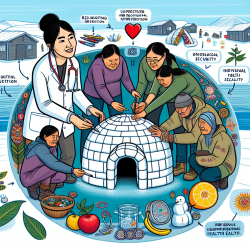Introduction
In the ever-evolving landscape of healthcare, the integration of technology has become indispensable. One such technological advancement is the use of Electronic Health Records (EHRs), which have transformed the way healthcare providers access and share patient information. A recent study titled Visualizing Collaborative Electronic Health Record Usage for Hospitalized Patients with Heart Failure sheds light on how EHRs can be used to enhance collaborative care and improve patient outcomes, particularly for those with heart failure.
Understanding the Research
The study, conducted by researchers from Northwestern University, aimed to visualize and describe collaborative EHR usage among healthcare providers for patients hospitalized with heart failure. The research utilized network analysis to map out the interactions between healthcare providers and patient records, revealing the extent of multidisciplinary collaboration.
Key findings from the study include:
- A total of 548 patient records were accessed by 5,113 healthcare providers in 2012.
- The provider collaboration network consisted of 1,504 nodes and 83,998 edges, indicating a high level of interaction.
- Seven major provider collaboration modules were identified, with an average clique size of 87.9 providers.
Implications for Practitioners
The insights gained from this study can be instrumental for practitioners looking to improve their skills and enhance patient care. Here are some practical steps practitioners can take based on the research findings:
- Embrace Multidisciplinary Collaboration: The study highlights the importance of multidisciplinary teams in providing comprehensive care. Practitioners should actively engage with colleagues from various specialties to ensure a holistic approach to patient care.
- Utilize Network Analysis: By understanding the patterns of EHR usage and collaboration networks, practitioners can identify key players in patient care and optimize communication and coordination efforts.
- Leverage Data for Decision-Making: The vast amount of data encoded in EHRs can be used to make informed decisions regarding patient care. Practitioners should utilize this data to identify trends, predict outcomes, and implement evidence-based practices.
Encouraging Further Research
While the study provides valuable insights, it also opens the door for further research. Practitioners are encouraged to explore the following areas:
- Exploring Other Conditions: While this study focused on heart failure, similar research can be conducted for other chronic conditions to understand the dynamics of care coordination.
- Longitudinal Studies: Conducting longitudinal studies can provide a deeper understanding of how collaborative EHR usage impacts patient outcomes over time.
- Integration of Advanced Technologies: Investigating the integration of artificial intelligence and machine learning with EHRs can further enhance care coordination and decision-making processes.
Conclusion
The study on collaborative EHR usage underscores the potential of network analysis in improving healthcare delivery. By embracing multidisciplinary collaboration, utilizing data-driven decision-making, and encouraging further research, practitioners can significantly enhance patient care and outcomes.
To read the original research paper, please follow this link: Visualizing collaborative electronic health record usage for hospitalized patients with heart failure.










